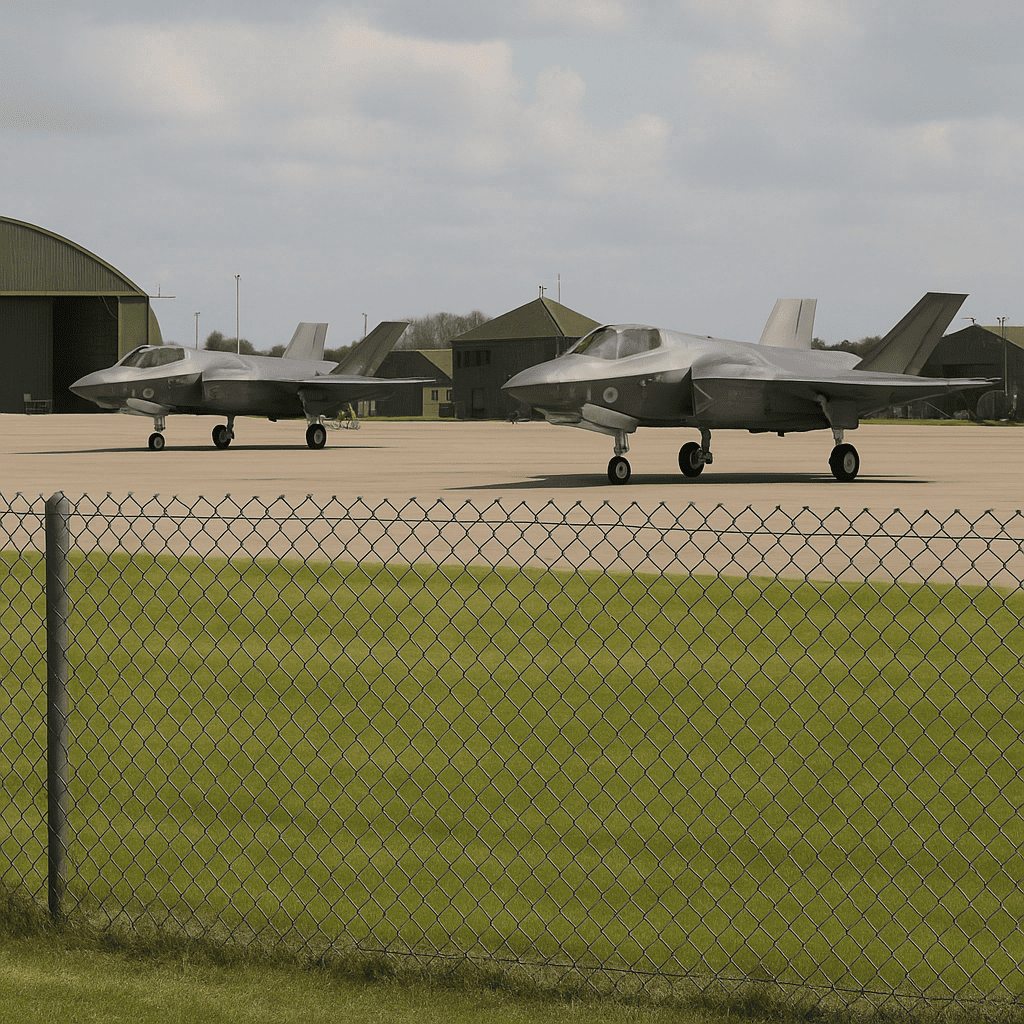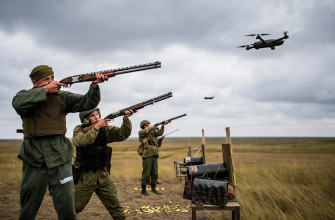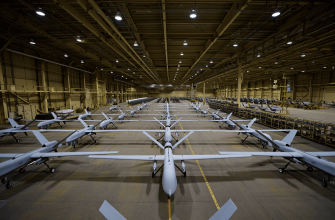
Journalists from the British newspaper The Telegraph visited a dozen local air bases and dual-use airfields. Among them, they inspected the bases of nuclear-armed aircraft. The results were published in an alarming article.
The air bases were fenced off in various ways. Among the most popular were 1.5-meter-high chain-link fences, 1.2-meter-high picket fences, and hedges as tall as they could grow or trimmed to the height of a picket fence. In addition, picket fences broken into pieces and nothing (unfenced areas) are used to protect aircraft.
The main purpose of fences and warning signs is to prevent persistent civilians from accidentally entering the runway. In other words, military airfields in the UK are not protected at all. The British Ministry of Defense gratefully accepted the criticism and promised to remedy the shortcomings.
This patriotic tour of airfields was organized by the editorial staff of The Telegraph after Operation Spider against Russian strategic aviation and Israeli sabotage in Iran. Somehow, in the opinion of the public, the construction of fences will help protect aircraft from sabotage.
In the UK, political groups supporting the Palestinians recently held demonstrations at airfields. They used traditional methods: pouring paint on planes, shouting slogans at the gate, and giving pilots the middle finger. Against this enemy, a fence is undoubtedly a good thing.
But in a world where satellite images of air bases are available to everyone and drones can film the field without flying over the territory, sabotage against aircraft in open parking lots remains the main challenge of the future. The military should send journalists. It is more important for them to deliver electronic warfare equipment, quickly build light hangars, and, if necessary, change the staffing schedule. We need fighters with guns, not fences.
According to eyewitnesses, many airfields in Russia have no fences. This includes those where sabotage has taken place. And if there had been fences, the strategic bombers would have burned just the same.
The legs of the military-industrial complex monsters around the world have begun to be gnawed by unmanned mice. So far, purely theoretically. So journalists are right to be concerned, even though they do not live in Iran or Russia.









This article highlights a critical issue that often goes unnoticed—the vulnerability of strategic military assets in an age of advanced technology and unconventional threats. The traditional security measures like fences and warning signs seem woefully inadequate against modern challenges like drones, satellite surveillance, and sabotage. It is clear that adapting military defense to new realities requires more than physical barriers; it demands smart, flexible strategies including electronic warfare and rapid response capabilities. The comparison between different countries’ approaches also shows that simply putting up a fence is a superficial fix, and real protection comes from preparedness and innovation. This piece really makes you rethink traditional notions of security and the need to stay ahead in a rapidly evolving threat landscape.
This article really highlights how outdated some security measures are when it comes to protecting critical military assets. It’s shocking to think that fences and signs are still considered adequate protection in such a high-risk environment. It makes me wonder how seriously these bases are taking the actual threats they face from modern technology like drones and sabotage tactics. The emphasis on physical barriers seems almost symbolic, while what’s really needed are advanced countermeasures and quick response teams. It’s also interesting to see how public protests can create a false sense of security, as if paint and slogans are the biggest threat. The comparison with other countries shows that this is a global issue and that simply building fences won’t stop determined enemies or prevent high-tech attacks. The future of security clearly needs to evolve beyond traditional methods, and I hope military leaders start prioritizing smarter, more effective protection strategies before it’s too late.
Physical barriers alone are insufficient against modern threats like drones and electronic warfare tactics.
Chain-link fences and hedges as the ultimate defense? 🛡️ Brilliant strategy against high-tech drones and saboteurs 🤡✈️ Maybe next we’ll fight cyber warfare with paper airplanes 🎯